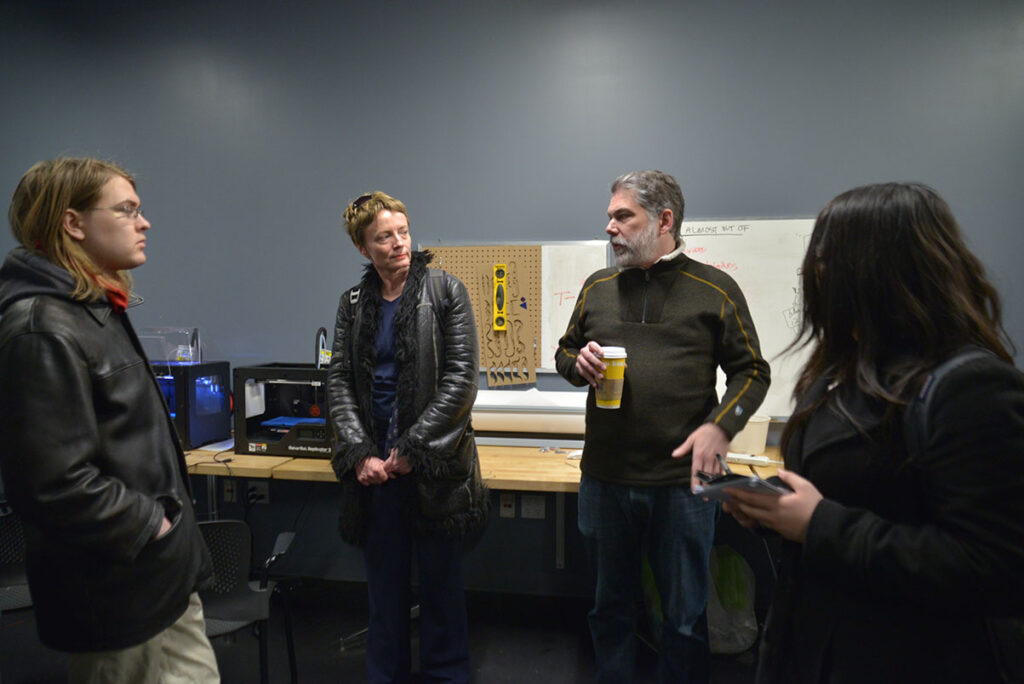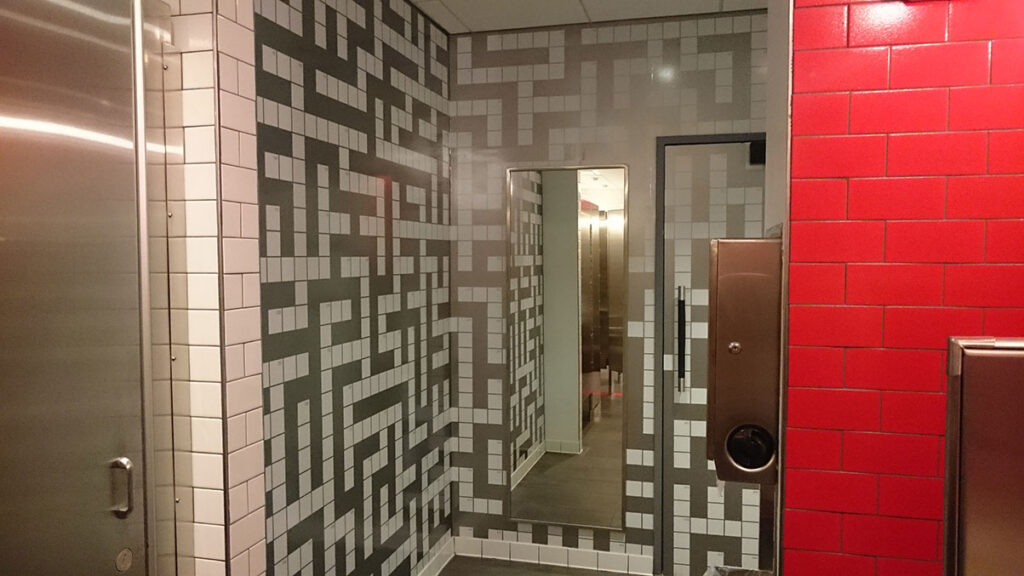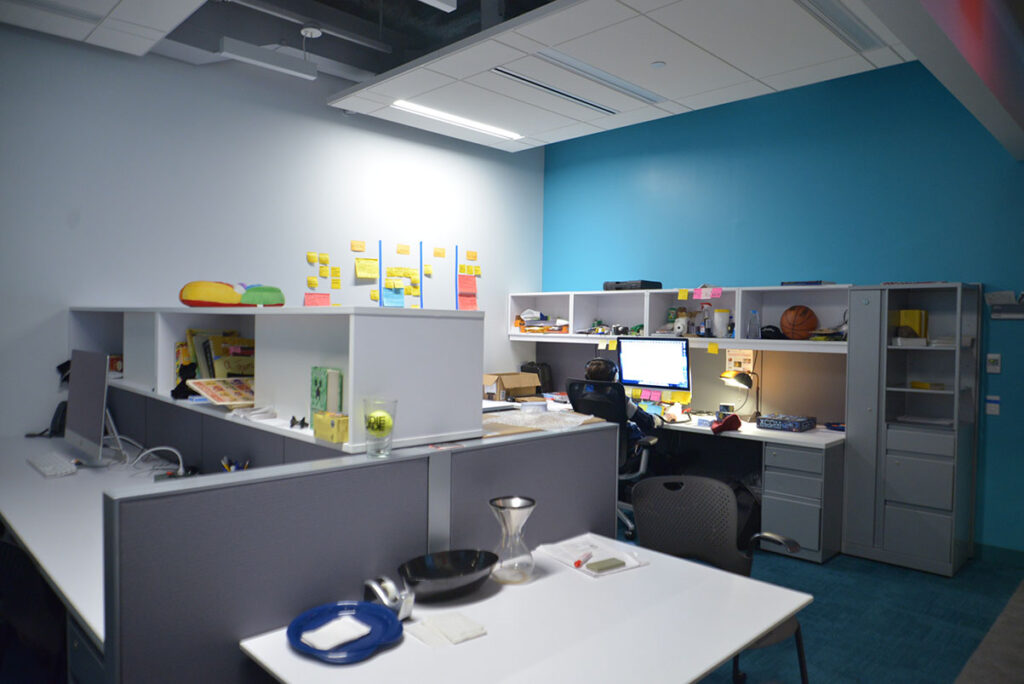
Frank Lantz is the Director of the NYU Game Center at Tisch School of the Arts, which has a 2-year MFA Game Design Program underway, and an undergrad BFA starting next fall. Students approach games as culture and there isn’t as much of a technical focus as other programs. Because good game design comes out of critical literacy, they have a Game Library.
Frank gave us a tour of the 1.5-year-old open-concept MAGNET space, which NYU Game Center shares with the Digital Media department, School of Engineering including Computer Science, and the Steinhardt School of Educational Technology. The purpose was not to merge departments, but to give students a cross-disciplinary edge and to share resources. We pass by one-page design documents produced in one of Eric Zimmerman’s classes.
“The landscape we’re in right now has been utterly transformed by a move towards smaller scale, more personal, more experimental work. This is really a great time to be making games and to be thinking about games as culture,” says Frank, “We used to see industry being dominated by AAA console and PC titles, but now we’re seeing much more diversity, many more individuals or small teams making titles that are both critically and commercially groundbreaking. And that’s a big part of our identity.”
Another part of NYU Game Center is physical computing, inspired by ITP. They investigate non-standard interfaces, physical games, street games, and sports, game shows, gambling, and the history of games and play.
“We are posing a question of students broader than simply video games: ‘What does it mean to be a creative person in the 21st century?’” Frank says this could mean having the metaskills to recognize and adapt to changing tools, techniques, and platforms, and doing work in a number of different modes centered around interactivity, designing experiences, designing systems, and broader issues.

When designing the MAGNET space at NYU, all parties agreed half the floor should be open, flexible, multi-purpose space. There is a lecture hall in that opens up to become exhibit space and a central open concept cafeteria. There is a music and audio lab with a mixing booth, a hardware lab (with laser cutters, oversize 3D printers, and plotters), a bunch of faculty offices, and a red presentation room.
The Black Box Theater, which we visited after, is where Ken Perlin and team have recently setup a motion-capture system for virtual reality research. The expensive tracking cameras were made possible only by the multiple departments in the MAGNET space pooling funding.

I asked Frank about what I see to be a blurring of the line between freemium games and gambling. He says we used to feel putting down $50 for a game box was a transparent transaction, then free-to-play (F2P) comes along with tricks and money extraction techniques which put pressure on the designer to take the player in unnatural directions. However, Frank says the old method had its own problems, like spending a lot of money advertising to convince the player to spend their $50 in the first place, leading to genre design loop conservatism.
On large teams, we used to be able to blame marketing for “cheapening” the design, but now we just blame F2P. “We hated marketing so much, we became the marketing department,” says Frank, “Now we have to confront the fact that we have to think about how to find an audience for our game, how to reach that audience, how to make money, and how to be sustainable. So in the indie community, we have a lot of angst about the commercial negotiations we can no longer just kick over to some other department, and just be pure artists.”
On large teams, we used to be able to blame marketing for “cheapening” the design, but now we just blame F2P. “We hated marketing so much, we became the marketing department,” says Frank, “Now we have to confront the fact that we have to think about how to find an audience for our game, how to reach that audience, how to make money, and how to be sustainable. So in the indie community, we have a lot of angst about the commercial negotiations we can no longer just kick over to some other department, and just be pure artists.”
The best we can do is be aware of tradeoffs and own up to them, but working on a smaller scale allows trial and error, which is a huge part of the engine of innovation in art and design.
Lee Saynor is a Digital Futures undergrad at OCAD University. The keystone of Atelier II – Collaboration was a week-long field trip in New York City, where the class visited some of the most important people and organizations in creative technology.
Leave a Reply